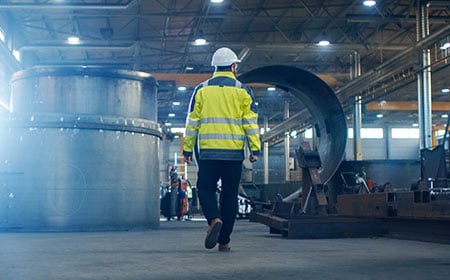
In a recent speech China’s President, Xi Jinping emphasized safety, stating that, “Development should not come at the expense of jeopardizing the safety of people and property”.
China’s safety record has shown steady improvements in recent years, with the total number of workplace accidents continuing to decline in 2019. However, China has continued to experience 2-3 major accidents annually in recent years, and many facilities that in particular manufacture or use hazardous chemicals have experienced multiple fatalities. This has resulted in the need to resume safety inspections and supervision.
Three Year Action Plan
The Chinese State Council, together with relevant departments, has issued a “Three-Year Action Plan for the National Safety Specific Rectification." The main objectives of the three-year Action Plan are to:
- Strengthen source control, systematic control and comprehensive control;
- Improve the effectiveness of eliminating hazards from the root causes that focus on personnel responsibility, management system, key projects and resource allocation;
- Establish dual systems of hazard identification and abatement as well as safety prevention and control;
- Steadily push forward the modernization of production safety management system and managerial capability;
- Continuously reduce the total number of accidents and serious accidents as well as effectively contain major accidents;
- Significantly enhance production safety across the country in order to guarantee the safety of people's life and property, high-quality economic development, social harmony and stability.
The three-year safety specific rectification action plan focuses on two themes:
- study and implement President Xi Jinping’s statement on production safety, focusing on safety awareness and implementation; and
- implement the main responsibility of enterprises with respect to safe production and promote the resolution of existing problems, e.g. the poor implementation of safety management system.
The Government has focused implementation of the plan across nine priority sectors, including hazardous chemicals manufacturing, fire fighting, industrial parks, urban construction, hazardous waste treatment, road transportation, civil aviation and railway infrastructure, coal mines and other mines. This has now begun at all levels of government for relevant companies.
Under this initiative, government is adopting a more “hands-off” approach than previously, with government agencies functioning in a supervision capacity. Companies will be expected to implement robust safety management programs and be legally and financially accountable for safety related matter sincluding daily management, management systems and control measures. This mirrors recent trends in environmental management in China, where government has reduced the number of approvals and other “green” tape - excessive environmental regulations and guidelines that must be followed before an official action can be taken.
In addition, central and provincial governments have issued directories of industrial processes to be eliminated1. Facilities with poor safety records or that are at high risk from a safety or environmental protection perspective will be shut down and will not be allowed to relocate elsewhere.
How Should Companies Respond?
Companies operating in China should adopt safety management programs that adhere to and go beyond Chinese regulatory requirements, as follows:
Accountability for implementation of Safety Management System (SMS)
Ensure that your SMS is implemented effectively from management through to front line workers. Safety training records for all employees should be maintained for inspection. Companies operating in the chemical sector must ensure that managers hold a university degree in petrochemicals and that all employees have attained a minimum of high school education;
Risk control and management
“Managing safety is to manage risk” is the slogan currently promoted by Chinese safety authorities. Companies are expected to have systems in place to identify potential hazards, evaluate risk exposure and to put in place control measures to minimize risk. Companies manufacturing, using, storing, transporting or disposing of hazardous chemicals shall perform risk assessments in accordance with the “Guidelines for the Identification, Removal and Management of Safety Hazards and Risks in Hazardous Chemical Enterprises ”, and Quantitative Risk Assessment (QRA) with reference to Chinese national codes GB 36894-2018 and GB/T 37243-2019.
Fire safety
Fire is the most common hazard, whether in a factory, warehouse or building. However, compliance with fire permitting requirements in China is inconsistent. Companies should assess fire safety at their facilities to identify potential fire hazards and/or regulatory compliance issues. Facilities using or storing hazardous chemicals should address fire hazards during production, operation, utilization, transport, storage and disposal.
Safety incentives
China’s national Work Safety Law requires companies to spend a certain percentage of annual revenues on safety management. For example a chemical manufacturer with an annual revenue of CNY 50 million is expected to spend 2% on safety related expenses.
Carrying out the Action Plan
The three-year safety specific rectification action plan will be carried out in four stages. We are currently in the second stage, which involves investigation and rectification and planned for the period from May to December 2020. Currently all levels of government have completed planning and have mobilized resources.
The main tasks are to identify hazards and require companies to make improvements. With the official launching of this action plan, ERM foresees increased inspection and supervision from safety authorities. While this may further strain business in the short term, it will ultimately benefit companies, their employees and society as a whole.
1.) For example, the Guidance Catalogue for Industry Structural Adjustment (2019) published by the National Development and Reformation Commission



